 |
 |
 |
 |
 |
 |
 |
 |
Click on the picture of your favorite celebrity to view more information. | |
 |
|||||||||
|
A MATCHLESS LIBRARY TELEVISION ARCHIVE |
 |
|
 |
|
 |
|
 |
|
 |
|
 |
|
 |
|
 |
|
 |
|
 |
|
 |
|
 |
|
 |
|
 |
|
 |
|
 |
|
 |
|
 |
|
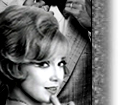 |
|
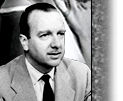 |
|
 |
|
 |
|
 |
|
 |
|
 |
|
 |
|
 |
|
 |
|
 |
|
 |
|
 |
|
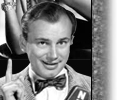 |
|
 |
|
 |
|
 |
|
 |
|
 |
|
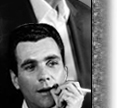 |
|
 |
|
 |
|
 |
|
 |
|
 |
|
 |
|
 |
|
 |
|
 |
|
 |
|
 |
|
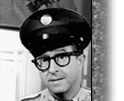 |
|
 |
|
 |
|
 |
|
 |
|
 |
|
 |
|
 |
|
 |
|
 |
|
 |
|
 |
|
 |
|
 |
|
 |
|
 |
|
 |
|
 |
|
 |
|
 |
|
 |
|
 |
|
 |
|
 |
|
 |
|
 |
|
 |
|
 |
|
 |
|
 |
|
 |
|
 |
|
 |
|
 |
|
 |
|
 |
|
 |
|
 |
|
 |
|
 |
|
 |
|
 |
|
 |
|
 |
|
 |
|
 |
|
 |
|
 |
|
 |
|
 |
|
 |
|
 |
|
 |
|
 |
|
 |
|
 |
|
 |
|
 |
|
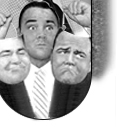 |
|
| Tributes | Talk | Events | News | Variety |
| Documentary | Music | Comedy | Juvenile | Awards |
| Biography | Sports | Productions | Others | Quiz |
| Specials |
|
2598 Results found in Category Music Pages: 1 2 3 4 5 6 [7] 8 9 10 11 12 13 14 15 16 17 18 19 20 21 22 23 24 25 26 27 28 29 30 31 32 |
|
#7163:
GREAT MUSIC FROM CHICAGO
1961-03-13, WGN, 00 min. Chicago Symphony Orchestra , Igor Markevitch October 18th, 1959-1966,
A one hour syndicated taped color weekly broadcast, featuring the Chicago Symphony Orchestra. The series was awarded a Peabody. Superb music by a 71 piece orchestra in the sumptuous setting of a ballroom. Different guest conductors appear on a weekly basis and take the podium.
Igor Markevitch Conductor.
|
|
#1324:
BELL TELEPHONE HOUR: MUCH ADO ABOUT MUSIC, THE
1961-03-17, WNBC, 52 min. Patrice Munsel , Dr. Frank Baxter , Donald Voorhees , Joan Sutherland , Sir John Gielgud , Alfred Drake , Jacques d'Amboise , Violette Verdy January 12, 1959-April 26, 1968. This musical series ran semiregularly for almost ten seasons-sometimes weekly, sometimes biweekly, and sometimes as irregularly scheduled specials. All types of music were presented on the hour series; Donald Voorhees conducted the Bell Telephone Orchestra. |
|
#7290:
MANTOVANI
1961-03-17, PBS, 00 min. Dorothy Collins , John Conte , Annunzio Mantovani John Conte was host for this half hour series of thirty nine easy listening programs, featuring Annunzio Mantovani and his orchestra. This series was produced in England and syndicated in the United States. The program featured a guest star each week. This program debuted in the United States on WNET channel 13 in New York on April 15th, 1961 with singer Dorothy Collins in a salute to the silver screen. Dupe of number 3924. |
|
#7164:
GREAT MUSIC FROM CHICAGO
1961-03-20, WGN, 00 min. Chicago Symphony Orchestra , John Barbirolli October 18th, 1959-1966,
A one hour syndicated taped color weekly broadcast, featuring the Chicago Symphony Orchestra. The series was awarded a Peabody. Superb music by a 71 piece orchestra in the sumptuous setting of a ballroom. Different guest conductors appear on a weekly basis and take the podium.
John Barbirolli Conductor.
|
|
#7291:
MANTOVANI
1961-03-24, PBS, 00 min. John Conte , Annunzio Mantovani John Conte was host for this half hour series of thirty nine easy listening programs, featuring Annunzio Mantovani and his orchestra. This series was produced in England and syndicated in the United States. The program featured a guest star each week. This program debuted in the United States on WNET channel 13 in New York on April 15th, 1961 with singer Dorothy Collins in a salute to the silver screen.
This was "The Music Of Love" broadcast.
|
|
#4536:
SING ALONG WITH MITCH
1961-03-24, WNBC, 52 min. Mitch Miller , Leslie Uggams , Diana Trask , Sandy Stewart , Gloria Lambert January 27, 1961-April 21, 1961; September 28, 1961-September 21, 1964. Home viewers were able to participate in this hour-long musical series, as the lyrics to the songs were superimposed at the bottom of their screens; viewers were invited to "follow the bouncing ball" as it moved from one lyric to the next. Goateed composer-arranger Mitch Miller led the Sing-Along Gang, and on-stage aggregation of about two dozen. Among the featured vocalists were Leslie Uggams, Diana Trask, Barbara McNair, and Gloria Lambert. "Sing Along with Mitch" was introduced on "Ford Startime" in 1960 and had a limited run in the spring of 1961, alternating with "The Bell Telephone Hour," before going weekly in the fall of that year. Reruns were exhumed in the spring of 1966 to replace the faltering "Sammy Davis Jr. Show." Bill Hobin produced and directed the series. |
|
#7398:
SING ALONG WITH MITCH
1961-03-24, NBC, 00 min. Mitch Miller , Leslie Uggams , Diana Trask , Sandy Stewart , Gloria Lambert January 27, 1961-April 21, 1961; September 28, 1961-September 21, 1964. This was the first broadcast of the series. Home viewers were able to participate in this hour-long musical series, as the lyrics to the songs were superimposed at the bottom of their screens; viewers were invited to "follow the bouncing ball" as it moved from one lyric to the next. Goateed composer-arranger Mitch Miller led the Sing-Along Gang, and on-stage aggregation of about two dozen. Among the featured vocalists were Leslie Uggams, Diana Trask, Barbara McNair, and Gloria Lambert. "Sing Along with Mitch" was introduced on "Ford Startime" in 1960 and had a limited run in the spring of 1961, alternating with "The Bell Telephone Hour," before going weekly in the fall of that year. Reruns were exhumed in the spring of 1966 to replace the faltering "Sammy Davis Jr. Show." Bill Hobin produced and directed the series.
|
|
#10178:
RAGTIME ERA, THE: "TIN PAN ALLEY"
1961-03-25, WOR, 28 min. Max Morath , Irving Berlin , Monroe Rosenfeld , Harry von Titzer February 11, 1961 - April 19, 1961
A 12-part series produced for the National Educational Television & Radio Center by KRMA-TV, Denver Colorado.
The Ragtime Era with host Max Morath, who at the age of 32 is the ideal spokesman. He holds forth at an elegant pianoforte, singing and playing in a lively, authentic style. He' a close student of the period when America's popular music developed, and he sparks the narrative segments with anecdote and erudition that is as bright as the music.
What is Tin Pan Alley? When did it get its start? Max Morath answers these and other questions in the course of an amazing and amusing program devoted to the music business. In the Ragtime Era. Do you realize that “A Bicycle Built for Two” was rejected by American music publishers, and only became popular after it was printed in England? Do you know who invented the phrase “Tin Pan Alley?” What do the names Rosenfeld, Von Tilzer, Berlin, or words like “nickelodeon,” “illustrated song,” or “coon song” mean to you? Did you know that popular music is one of the outstanding examples of the improvement in civil liberties over the past decade? Or that it was ragtime which brought everyday speech and slang into popular songs?
In this episode, Max Morath explains how Tin Pan Alley got its name; discusses the rise of the popular song in America; explains the idea of the “Illustrated Song” as an advertising technique for selling songs; discusses the dangers of stereotypes and racism in song and plays a “coon song” from the Rag Time Era; explains the meaning of copyright and gives a brief history on the invention of the gramophone.
Episodes in this series cover American pop music from the 1890's to 1920. Included are broadcasts focusing on the Blues, Ragtime, Musical Comedy, Tin Pan Alley, the Mauve Decade, Those Singin' Songs, Movie Music, the Song Pluggers, Tempos of the Time, and the songs made popular during World War 1.
From radio to television to national fame as a performer, Max Morath became the recognized purveyor of music and popular culture of the ragtime era. That is the way most people remember Max Morath as “Mr. Ragtime.”
In 1959, his epic 12-episode TV series The Ragtime Era, was the first modern educational documentary at KRMA-TV in Denver that both entertained and informed. It ushered in a field now produced by modern documentarians like Ken Burns at Florentine Films. Max wrote, hosted, and performed each 30-minute episode live in one-take and followed that series with other TV projects.
He pioneered educational television with his producer Moss Hall and this series helped move the transition from National Educational Television (NET) to the Public Broadcasting System (PBS).
Archival Television Audio, Inc. has preserved in its archive ten of the twelve part series. Missing is the sixth broadcast in the series,"The Yankee Doodle Boy," and the ninth broadcast in the series, "Emancipation of Women: New Music of the 20's"
With “The Ragtime Era” National Educational Television brings viewers one of the most delightful, and at the same time informative series ever produced. But “The Ragtime Era” is more than a recreation of the music from 1890 to 1920. It is also a careful study of American social history between 1890 and 1920, a period which saw the beginning of the labor movement, modern technical achievements, feminism, the growing importance of Negroes and immigrants. It was a period of activity, unrest, gaiety and real distress. And, finally, “The Ragtime Era” provides the audience with some sound and at the same time uncomplicated, musical theory and analysis. To do all of this KRMA-TV, the Denver affiliate of NET, has drawn on the services of singer-pianist-musician Max Morath, who combines with his performances of ragtime classics a presentation of the pictures, stage sets, and other paraphernalia of “The Ragtime Era.”
Episodes:
Episode #1: The Mauve Decade
Episode #2: Any Rags Today
Episode #3: Lonesome Road
Episode #4: Those Real Singin’ Songs
Episode #5: More Music than Comedy
Episode #6: The Yankee Doodle Boy
Episode #7: Tin Pan Alley
Episode #8: Tin Pan Alley Also Ran
Episode #9: June, Moon, and Spoon
Episode #10: The Tempos of Our Time
Episode #11: Feet First
Episode #12: The Great War
|
|
#7165:
GREAT MUSIC FROM CHICAGO
1961-03-27, WGN, 00 min. Chicago Symphony Orchestra , Andre Cluytens October 18th, 1959-1966,
A one hour syndicated taped color weekly broadcast, featuring the Chicago Symphony Orchestra. The series was awarded a Peabody. Superb music by a 71 piece orchestra in the sumptuous setting of a ballroom. Different guest conductors appear on a weekly basis and take the podium.
Andre Cluytens Conductor.
|
|
#1327:
BELL TELEPHONE HOUR: THE SIGNS OF SPRING, THE
1961-03-31, WNBC, 52 min. John Raitt , Martha Wright , Donald Voorhees , Birgit Nilsson , The Brothers Four , Paul Hartman , Allegra Kent , Schola Cantorum , Tommy Rall January 12, 1959-April 26, 1968. This musical series ran semiregularly for almost ten seasons-sometimes weekly, sometimes biweekly, and sometimes as irregularly scheduled specials. All types of music were presented on the hour series; Donald Voorhees conducted the Bell Telephone Orchestra. |
|
#7166:
GREAT MUSIC FROM CHICAGO
1961-04-03, WGN, 00 min. Chicago Symphony Orchestra , Percy Faith October 18th, 1959-1966,
A one hour syndicated taped color weekly broadcast, featuring the Chicago Symphony Orchestra. The series was awarded a Peabody. Superb music by a 71 piece orchestra in the sumptuous setting of a ballroom. Different guest conductors appear on a weekly basis and take the podium.
Percy Faith Conductor.
|
|
#7399:
SING ALONG WITH MITCH
1961-04-07, NBC, 00 min. Mitch Miller , Guy Mitchell , Leslie Uggams , Diana Trask , Sandy Stewart , Gloria Lambert January 27, 1961-April 21, 1961; September 28, 1961-September 21, 1964. This was the first broadcast of the series. Home viewers were able to participate in this hour-long musical series, as the lyrics to the songs were superimposed at the bottom of their screens; viewers were invited to "follow the bouncing ball" as it moved from one lyric to the next. Goateed composer-arranger Mitch Miller led the Sing-Along Gang, and on-stage aggregation of about two dozen. Among the featured vocalists were Leslie Uggams, Diana Trask, Barbara McNair, and Gloria Lambert. "Sing Along with Mitch" was introduced on "Ford Startime" in 1960 and had a limited run in the spring of 1961, alternating with "The Bell Telephone Hour," before going weekly in the fall of that year. Reruns were exhumed in the spring of 1966 to replace the faltering "Sammy Davis Jr. Show." Bill Hobin produced and directed the series.
A 1952 Style "Hit Parade" Is The Theme.
|
|
#7292:
MANTOVANI
1961-04-07, PBS, 00 min. John Conte , Annunzio Mantovani John Conte was host for this half hour series of thirty nine easy listening programs, featuring Annunzio Mantovani and his orchestra. This series was produced in England and syndicated in the United States. The program featured a guest star each week. This program debuted in the United States on WNET channel 13 in New York on April 15th, 1961 with singer Dorothy Collins in a salute to the silver screen.
Mantovani plays the music of Cole Porter.
|
|
#4537:
SING ALONG WITH MITCH
1961-04-07, WNBC, 52 min. Mitch Miller , Guy Mitchell , Louise O'Brian , Leslie Uggams , Diana Trask , Sandy Stewart , Gloria Lambert January 27, 1961-April 21, 1961; September 28, 1961-September 21, 1964. Home viewers were able to participate in this hour-long musical series, as the lyrics to the songs were superimposed at the bottom of their screens; viewers were invited to "follow the bouncing ball" as it moved from one lyric to the next. Goateed composer-arranger Mitch Miller led the Sing-Along Gang, and on-stage aggregation of about two dozen. Among the featured vocalists were Leslie Uggams, Diana Trask, Barbara McNair, and Gloria Lambert. "Sing Along with Mitch" was introduced on "Ford Startime" in 1960 and had a limited run in the spring of 1961, alternating with "The Bell Telephone Hour," before going weekly in the fall of that year. Reruns were exhumed in the spring of 1966 to replace the faltering "Sammy Davis Jr. Show." Bill Hobin produced and directed the series. |
|
#78:
SING ALONG WITH MITCH
1961-04-07, WNBC, 50 min. Mitch Miller , Guy Mitchell , Louise O'Brian , Leslie Uggams Mitch Miller and his chorus with guests Guy Mitchell, Louise O'Brian and Leslie Uggams sing tunes from the 1904 St. Louis World's Fair. |
|
#7255:
LAWRENCE WELK SHOW, THE
1961-04-08, WABC, ?? min. Lawrence Welk THE "MUSIC OF FRANCE" SHOW. July 2, 1955-September 4, 1971; 1971-1982 (Syndicated). "The Lawrence Welk Show" presented middle-of-the-road music for almost three decades. Numbers were performed by the members of Welk's television family. That large group included the Lennon Sisters (Dianne, Peggy, Kathy and Janet), Alice Lon, Norma Zimmer, Tanya Falan, Arthur Duncan, Joe Feeney, Guy Hovis, Jim Roberts, Ralna English, Larry Hooper, Jerry Burke and former Mouseketeer Bobby Burgess. |
|
#10179:
RAGTIME ERA, THE: "TIN PAN ALLEY ALSO RAN" (THE SONG PLUGER)
1961-04-11, WOR, 28 min. Max Morath February 11, 1961 - April 19, 1961
A 12-part series produced for the National Educational Television & Radio Center by KRMA-TV, Denver Colorado.
The Ragtime Era with host Max Morath, who at the age of 32 is the ideal spokesman. He holds forth at an elegant pianoforte, singing and playing in a lively, authentic style. He' a close student of the period when America's popular music developed, and he sparks the narrative segments with anecdote and erudition that is as bright as the music.
Continuing with his anecdotes and analysis of Tin Pan Alley, Mr. Morath tells about the songs which no one remembers today – how they were chosen, what made theme popular, and why they were forgotten. He tells about the song-plugger, the growth of movies and the illustrated song, the development and decline of the sheet music business, and the importance of new kinds of music and novel ideas. He also speaks about the fascinating and feverish world behind the scenes of the popular music arena of the early 1900s.
Episodes in this series cover American pop music from the 1890's to 1920. Included are broadcasts focusing on the Blues, Ragtime, Musical Comedy, Tin Pan Alley, the Mauve Decade, Those Singin' Songs, Movie Music, the Song Pluggers, Tempos of the Time, and the songs made popular during World War 1.
From radio to television to national fame as a performer, Max Morath became the recognized purveyor of music and popular culture of the ragtime era. That is the way most people remember Max Morath as “Mr. Ragtime.”
In 1959, his epic 12-episode TV series The Ragtime Era, was the first modern educational documentary at KRMA-TV in Denver that both entertained and informed. It ushered in a field now produced by modern documentarians like Ken Burns at Florentine Films. Max wrote, hosted, and performed each 30-minute episode live in one-take and followed that series with other TV projects.
He pioneered educational television with his producer Moss Hall and this series helped move the transition from National Educational Television (NET) to the Public Broadcasting System (PBS).
Archival Television Audio, Inc. has preserved in its archive ten of the twelve part series. Missing is the sixth broadcast in the series,"The Yankee Doodle Boy," and the ninth broadcast in the series, "Emancipation of Women: New Music of the 20's"
With “The Ragtime Era” National Educational Television brings viewers one of the most delightful, and at the same time informative series ever produced. But “The Ragtime Era” is more than a recreation of the music from 1890 to 1920. It is also a careful study of American social history between 1890 and 1920, a period which saw the beginning of the labor movement, modern technical achievements, feminism, the growing importance of Negroes and immigrants. It was a period of activity, unrest, gaiety and real distress. And, finally, “The Ragtime Era” provides the audience with some sound and at the same time uncomplicated, musical theory and analysis. To do all of this KRMA-TV, the Denver affiliate of NET, has drawn on the services of singer-pianist-musician Max Morath, who combines with his performances of ragtime classics a presentation of the pictures, stage sets, and other paraphernalia of “The Ragtime Era.”
Episodes:
Episode #1: The Mauve Decade
Episode #2: Any Rags Today
Episode #3: Lonesome Road
Episode #4: Those Real Singin’ Songs
Episode #5: More Music than Comedy
Episode #6: The Yankee Doodle Boy
Episode #7: Tin Pan Alley
Episode #8: Tin Pan Alley Also Ran
Episode #9: June, Moon, and Spoon
Episode #10: The Tempos of Our Time
Episode #11: Feet First
Episode #12: The Great War
|
|
#1328:
BELL TELEPHONE HOUR: THE YOUNGER GENERATION, THE
1961-04-14, WNBC, 52 min. Arlene Francis , The Chad Mitchell Trio , Donald Voorhees , Harve Presnell , Brian Davies , The Earl Twins , Ron Husmann , Jaime Laredo , Patricia McBride , Lauri Peters , Eileen Rodgers , Paula Stewart , Edward Villella , The Metropolitan Opera Auditions Winner January 12, 1959-April 26, 1968. This musical series ran semiregularly for almost ten seasons-sometimes weekly, sometimes biweekly, and sometimes as irregularly scheduled specials. All types of music were presented on the hour series; Donald Voorhees conducted the Bell Telephone Orchestra. |
|
#3923:
MANTOVANI
1961-04-15, WNTA, 27 min. Dorothy Collins , Mantovani , John Conte This was the first broadcast of the series. John Conte was host for this half-hour film series which features the Mantovani orchestra and dancers, joined by a guest star each week. Tonight's guest, singer Dorothy Collins, joins John Conte and the Mantovani orchestra and dancers in a salute to the "Silver Screen." |
|
#10180:
RAGTIME ERA, THE: "TEMPOS OF OUR TIME"
1961-04-15, WOR, 28 min. Max Morath February 11, 1961 - April 19, 1961
A 12-part series produced for the National Educational Television & Radio Center by KRMA-TV, Denver Colorado.
The Ragtime Era with host Max Morath, who at the age of 32 is the ideal spokesman. He holds forth at an elegant pianoforte, singing and playing in a lively, authentic style. He' a close student of the period when America's popular music developed, and he sparks the narrative segments with anecdote and erudition that is as bright as the music.
“A tune needs a rhythmic pattern – unless you’re singing in the bathtub. How else will you know when to tape your feet?” So asks Mr. Morath at the beginning of this program. He spends the rest of the half hour explaining all the different rhythmic patterns used in ragtime music. Using delightful examples and the rhythm section of a band to illustrate his points, he distinguishes between 2/4, ¾ and 6/8 time, between largo, allegretto, and other tempos, and he shows how the rhythm of a song can change its whole feeling. The foot-tapping part of a song is just as important as the words or the harmonies, and this program explores how the foot-tapping part is composed.
Continuing with his anecdotes and analysis of Tin Pan Alley, Mr. Morath tells about the songs which no one remembers today – how they were chosen, what made theme popular, and why they were forgotten. He tells about the song-plugger, the growth of movies and the illustrated song, the development and decline of the sheet music business, and the importance of new kinds of music and novel ideas. He also speaks about the fascinating and feverish world behind the scenes of the popular music arena of the early 1900s.
Episodes in this series cover American pop music from the 1890's to 1920. Included are broadcasts focusing on the Blues, Ragtime, Musical Comedy, Tin Pan Alley, the Mauve Decade, Those Singin' Songs, Movie Music, the Song Pluggers, Tempos of the Time, and the songs made popular during World War 1.
From radio to television to national fame as a performer, Max Morath became the recognized purveyor of music and popular culture of the ragtime era. That is the way most people remember Max Morath as “Mr. Ragtime.”
In 1959, his epic 12-episode TV series The Ragtime Era, was the first modern educational documentary at KRMA-TV in Denver that both entertained and informed. It ushered in a field now produced by modern documentarians like Ken Burns at Florentine Films. Max wrote, hosted, and performed each 30-minute episode live in one-take and followed that series with other TV projects.
He pioneered educational television with his producer Moss Hall and this series helped move the transition from National Educational Television (NET) to the Public Broadcasting System (PBS).
Archival Television Audio, Inc. has preserved in its archive ten of the twelve part series. Missing is the sixth broadcast in the series,"The Yankee Doodle Boy," and the ninth broadcast in the series, "Emancipation of Women: New Music of the 20's"
With “The Ragtime Era” National Educational Television brings viewers one of the most delightful, and at the same time informative series ever produced. But “The Ragtime Era” is more than a recreation of the music from 1890 to 1920. It is also a careful study of American social history between 1890 and 1920, a period which saw the beginning of the labor movement, modern technical achievements, feminism, the growing importance of Negroes and immigrants. It was a period of activity, unrest, gaiety and real distress. And, finally, “The Ragtime Era” provides the audience with some sound and at the same time uncomplicated, musical theory and analysis. To do all of this KRMA-TV, the Denver affiliate of NET, has drawn on the services of singer-pianist-musician Max Morath, who combines with his performances of ragtime classics a presentation of the pictures, stage sets, and other paraphernalia of “The Ragtime Era.”
Episodes:
Episode #1: The Mauve Decade
Episode #2: Any Rags Today
Episode #3: Lonesome Road
Episode #4: Those Real Singin’ Songs
Episode #5: More Music than Comedy
Episode #6: The Yankee Doodle Boy
Episode #7: Tin Pan Alley
Episode #8: Tin Pan Alley Also Ran
Episode #9: June, Moon, and Spoon
Episode #10: The Tempos of Our Time
Episode #11: Feet First
Episode #12: The Great War
|
|
#7167:
GREAT MUSIC FROM CHICAGO
1961-04-17, WGN, 00 min. Chicago Symphony Orchestra , Walter Hendl October 18th, 1959-1966,
A one hour syndicated taped color weekly broadcast, featuring the Chicago Symphony Orchestra. The series was awarded a Peabody. Superb music by a 71 piece orchestra in the sumptuous setting of a ballroom. Different guest conductors appear on a weekly basis and take the podium.
Walter Hendl Conductor.
|
|
#4538:
SING ALONG WITH MITCH
1961-04-21, WNBC, 52 min. Mitch Miller , Leslie Uggams , Diana Trask , Sandy Stewart , Gloria Lambert , Jill Corey January 27, 1961-April 21, 1961; September 28, 1961-September 21, 1964. Home viewers were able to participate in this hour-long musical series, as the lyrics to the songs were superimposed at the bottom of their screens; viewers were invited to "follow the bouncing ball" as it moved from one lyric to the next. Goateed composer-arranger Mitch Miller led the Sing-Along Gang, and on-stage aggregation of about two dozen. Among the featured vocalists were Leslie Uggams, Diana Trask, Barbara McNair, and Gloria Lambert. "Sing Along with Mitch" was introduced on "Ford Startime" in 1960 and had a limited run in the spring of 1961, alternating with "The Bell Telephone Hour," before going weekly in the fall of that year. Reruns were exhumed in the spring of 1966 to replace the faltering "Sammy Davis Jr. Show." Bill Hobin produced and directed the series. |
|
#3921:
MANTOVANI
1961-04-22, WNTA, 27 min. Vic Damone , Mantovani , John Conte , Jacqueline Delman This was the "Trip To Paris" broadcast. John Conte was host for this half-hour series of 39 easy listening programs, produced in England and syndicated in the U.S. The program featured the Mantovani orchestra, headed by the star of the program, Mantovani, and a guest star each week. Mantovani's U.S. debut aired on WNET Channel 13 in New York on April 15, 1961 with singer Dorothy Collins in a salute to the "Silver Screen." |
|
#10181:
RAGTIME ERA, THE: "FEET FIRST"
1961-04-22, WOR, 28 min. Max Morath February 11, 1961 - April 19, 1961
A 12-part series produced for the National Educational Television & Radio Center by KRMA-TV, Denver Colorado.
The Ragtime Era with host Max Morath, who at the age of 32 is the ideal spokesman. He holds forth at an elegant pianoforte, singing and playing in a lively, authentic style. He' a close student of the period when America's popular music developed, and he sparks the narrative segments with anecdote and erudition that is as bright as the music.
This program deals largely with those years after 1911, when “America jumped, not headlong but feet first, into a dance mania,” as Max Morath puts it. How many people remember the “Grizzly Bear,” the “Kangaroo Dips,” the “Lama Duck,” or the most famous one of all, the “Turkey Trot?” Mr. Morath plays the music which sent ragtime America dance-crazy, and the steps themselves, complicated or simple, exhausting or romantic, are danced by the Cornick dance team. The progression form the strenuous and difficult waltzes and schottische, to the simpler, less exhausting two-steps, to finally, the more elaborate tangos; the growth of dance halls, tea dances, and, incidentally, cocktail parties; the dances left over from the Ragtime Era which we’re still dancing – these are the topics of this program.
Episodes in this series cover American pop music from the 1890's to 1920. Included are broadcasts focusing on the Blues, Ragtime, Musical Comedy, Tin Pan Alley, the Mauve Decade, Those Singin' Songs, Movie Music, the Song Pluggers, Tempos of the Time, and the songs made popular during World War 1.
From radio to television to national fame as a performer, Max Morath became the recognized purveyor of music and popular culture of the ragtime era. That is the way most people remember Max Morath as “Mr. Ragtime.”
In 1959, his epic 12-episode TV series The Ragtime Era, was the first modern educational documentary at KRMA-TV in Denver that both entertained and informed. It ushered in a field now produced by modern documentarians like Ken Burns at Florentine Films. Max wrote, hosted, and performed each 30-minute episode live in one-take and followed that series with other TV projects.
He pioneered educational television with his producer Moss Hall and this series helped move the transition from National Educational Television (NET) to the Public Broadcasting System (PBS).
Archival Television Audio, Inc. has preserved in its archive ten of the twelve part series. Missing is the sixth broadcast in the series,"The Yankee Doodle Boy," and the ninth broadcast in the series, "Emancipation of Women: New Music of the 20's"
With “The Ragtime Era” National Educational Television brings viewers one of the most delightful, and at the same time informative series ever produced. But “The Ragtime Era” is more than a recreation of the music from 1890 to 1920. It is also a careful study of American social history between 1890 and 1920, a period which saw the beginning of the labor movement, modern technical achievements, feminism, the growing importance of Negroes and immigrants. It was a period of activity, unrest, gaiety and real distress. And, finally, “The Ragtime Era” provides the audience with some sound and at the same time uncomplicated, musical theory and analysis. To do all of this KRMA-TV, the Denver affiliate of NET, has drawn on the services of singer-pianist-musician Max Morath, who combines with his performances of ragtime classics a presentation of the pictures, stage sets, and other paraphernalia of “The Ragtime Era.”
Episodes:
Episode #1: The Mauve Decade
Episode #2: Any Rags Today
Episode #3: Lonesome Road
Episode #4: Those Real Singin’ Songs
Episode #5: More Music than Comedy
Episode #6: The Yankee Doodle Boy
Episode #7: Tin Pan Alley
Episode #8: Tin Pan Alley Also Ran
Episode #9: June, Moon, and Spoon
Episode #10: The Tempos of Our Time
Episode #11: Feet First
Episode #12: The Great War
|
|
#5911:
CHEVY SHOW: "HAPPIEST DAY, THE"
1961-04-23, WNBC, 54 min. Charlie Ruggles , Craig Stevens , Janis Paige , Wally Cox , Jack Carson , Bea Benaderet , Alex Stordahl December 8, 1957-June 18, 1961. Programs not hosted by Dinah Shore (every 4th week during the season of 1957-58 and 1958-59, more often thereafter until June 1961) were known as "The Chevy Show." Presented on "THE CHEVY SHOW." which was also a weekly summer replacement for "The Dinah Shore Chevy Show" in 1958 and 1959. June 22, 1958 to September 27, 1959, with rotating hosts Janet Blair, John Raitt and Edie Adams. The format was a mixed bag of popular and classical music, skits and monologues. During the summer run of 1959 (June 7, 1959 to September 27, 1959), Blair and Raitt returned as co-hosts. Dorothy Kirsten appeared during both seasons. Live musical with interesting premise. Seems things are in a miserable state of Earth, so a heavenly messenger is sent down to deliver a "commercial" over a world-wide television network. The angel tells his viewers that their lives can be free from worries about such trivial maters as money and health. He announces he'll prove his point by showing a day in the life of young Kathy Hewitt, assisted by himself as her guardian angel. Janis Paige sings, "Too Old," and joins Craig Stevens in "Dancing in a Dream." Axel Stordahl conducts the orchestra. |
|
#9489:
CHEVY SHOW: "HAPPIEST DAY, THE"
1961-04-23, WNBC, 54 min. Charlie Ruggles , Craig Stevens , Janis Paige , Wally Cox , Jack Carson , Bea Benaderet , Alex Stordahl December 8, 1957-June 18, 1961. Programs not hosted by Dinah Shore (every 4th week during the season of 1957-58 and 1958-59, more often thereafter until June 1961) were known as "The Chevy Show." Presented on "THE CHEVY SHOW." which was also a weekly summer replacement for "The Dinah Shore Chevy Show" in 1958 and 1959. June 22, 1958 to September 27, 1959, with rotating hosts Janet Blair, John Raitt and Edie Adams. The format was a mixed bag of popular and classical music, skits and monologues. During the summer run of 1959 (June 7, 1959 to September 27, 1959), Blair and Raitt returned as co-hosts. Dorothy Kirsten appeared during both seasons. Live musical with interesting premise. Seems things are in a miserable state of Earth, so a heavenly messenger is sent down to deliver a "commercial" over a world-wide television network. The angel tells his viewers that their lives can be free from worries about such trivial maters as money and health. He announces he'll prove his point by showing a day in the life of young Kathy Hewitt, assisted by himself as her guardian angel. Janis Paige sings, "Too Old," and joins Craig Stevens in "Dancing in a Dream." Axel Stordahl conducts the orchestra. |
|
#7168:
GREAT MUSIC FROM CHICAGO
1961-04-24, WGN, 00 min. Andre Kostelanetz , Chicago Symphony Orchestra October 18th, 1959-1966,
A one hour syndicated taped color weekly broadcast, featuring the Chicago Symphony Orchestra. The series was awarded a Peabody. Superb music by a 71 piece orchestra in the sumptuous setting of a ballroom. Different guest conductors appear on a weekly basis and take the podium.
Andre Kostelanetz Conductor.
|
|
#5447:
STEINWAY HALL
1961-04-27, RADIO, 30 min. Roger Williams , The Ahmad Jamal Trio , The John Lewis Quartet , Ferrante and Teicher A series of radio shows sponsored by Steinway Pianos. The accent is showcasing musicians. This broadcast presented an all-star jazz concert. |
|
#1330:
BELL TELEPHONE HOUR: ENCORE! ENCORE! ENCORE!, THE
1961-04-28, WNBC, 52 min. Mahalia Jackson , Robert Preston , Rosemary Clooney , Donald Voorhees , Marilyn Van Derbur , Marge and Gower Champion , Zino Francescatti , Ballet Russe de Monte Carlo , The Eddie Condon Jazz All-Stars January 12, 1959-April 26, 1968. This was the final broadcast of the season. This musical series ran semiregularly for almost ten seasons-sometimes weekly, sometimes biweekly, and sometimes as irregularly scheduled specials. All types of music were presented on the hour series; Donald Voorhees conducted the Bell Telephone Orchestra. |
|
#10182:
RAGTIME ERA, THE: "THE GREAT WAR"
1961-04-29, WOR, 28 min. Max Morath February 11, 1961 - April 19, 1961
A 12-part series produced for the National Educational Television & Radio Center by KRMA-TV, Denver Colorado.
The Ragtime Era with host Max Morath, who at the age of 32 is the ideal spokesman. He holds forth at an elegant pianoforte, singing and playing in a lively, authentic style. He' a close student of the period when America's popular music developed, and he sparks the narrative segments with anecdote and erudition that is as bright as the music.
The Ragtime Era, says Max Morath, ended with the end of World War I. He devotes a large part of this final program to a description, in words and music, of America’s part before, during and after the war. Our unwillingness, and our unpreparedness, then our desperate efforts to arm and to persuade our people that it was right to arm, our soldiers’ views of the war, and our reactions to the end of the war – all these reflected in the songs of the period, the songs which put an end to the Ragtime Era
Episodes in this series cover American pop music from the 1890's to 1920. Included are broadcasts focusing on the Blues, Ragtime, Musical Comedy, Tin Pan Alley, the Mauve Decade, Those Singin' Songs, Movie Music, the Song Pluggers, Tempos of the Time, and the songs made popular during World War 1.
From radio to television to national fame as a performer, Max Morath became the recognized purveyor of music and popular culture of the ragtime era. That is the way most people remember Max Morath as “Mr. Ragtime.”
In 1959, his epic 12-episode TV series The Ragtime Era, was the first modern educational documentary at KRMA-TV in Denver that both entertained and informed. It ushered in a field now produced by modern documentarians like Ken Burns at Florentine Films. Max wrote, hosted, and performed each 30-minute episode live in one-take and followed that series with other TV projects.
He pioneered educational television with his producer Moss Hall and this series helped move the transition from National Educational Television (NET) to the Public Broadcasting System (PBS).
Archival Television Audio, Inc. has preserved in its archive ten of the twelve part series. Missing is the sixth broadcast in the series,"The Yankee Doodle Boy," and the ninth broadcast in the series, "Emancipation of Women: New Music of the 20's"
With “The Ragtime Era” National Educational Television brings viewers one of the most delightful, and at the same time informative series ever produced. But “The Ragtime Era” is more than a recreation of the music from 1890 to 1920. It is also a careful study of American social history between 1890 and 1920, a period which saw the beginning of the labor movement, modern technical achievements, feminism, the growing importance of Negroes and immigrants. It was a period of activity, unrest, gaiety and real distress. And, finally, “The Ragtime Era” provides the audience with some sound and at the same time uncomplicated, musical theory and analysis. To do all of this KRMA-TV, the Denver affiliate of NET, has drawn on the services of singer-pianist-musician Max Morath, who combines with his performances of ragtime classics a presentation of the pictures, stage sets, and other paraphernalia of “The Ragtime Era.”
Episodes:
Episode #1: The Mauve Decade
Episode #2: Any Rags Today
Episode #3: Lonesome Road
Episode #4: Those Real Singin’ Songs
Episode #5: More Music than Comedy
Episode #6: The Yankee Doodle Boy
Episode #7: Tin Pan Alley
Episode #8: Tin Pan Alley Also Ran
Episode #9: June, Moon, and Spoon
Episode #10: The Tempos of Our Time
Episode #11: Feet First
Episode #12: The Great War
|
|
#3922:
MANTOVANI
1961-04-29, WNTA, 27 min. Connie Francis , Mantovani , The Hi Lo's This was the "The Music Of Love" broadcast. John Conte was host for this half-hour series of 39 easy listening programs, produced in England and syndicated in the U.S. The program featured the Mantovani orchestra, headed by the star of the program, Mantovani, and a guest star each week. Mantovani's U.S. debut aired on WNET Channel 13 in New York on April 15, 1961 with singer Dorothy Collins in a salute to the "Silver Screen." |
|
#7256:
LAWRENCE WELK SHOW, THE
1961-04-29, WABC, ?? min. Lawrence Welk July 2, 1955-September 4, 1971; 1971-1982 (Syndicated). "The Lawrence Welk Show" presented middle-of-the-road music for almost three decades. Numbers were performed by the members of Welk's television family. That large group included the Lennon Sisters (Dianne, Peggy, Kathy and Janet), Alice Lon, Norma Zimmer, Tanya Falan, Arthur Duncan, Joe Feeney, Guy Hovis, Jim Roberts, Ralna English, Larry Hooper, Jerry Burke and former Mouseketeer Bobby Burgess. |
|
#3924:
MANTOVANI
1961-05-06, WNTA, 27 min. Patachou , Mantovani , John Conte This was the "Musical Tribute To France" broadcast. John Conte was host for this half-hour series of 39 easy listening programs, produced in England and syndicated in the U.S. The program featured the Mantovani orchestra, headed by the star of the program, Mantovani, and a guest star each week. Mantovani's U.S. debut aired on WNET Channel 13 in New York on April 15, 1961 with singer Dorothy Collins in a salute to the "Silver Screen." |
|
#3925:
MANTOVANI
1961-05-13, WNTA, 27 min. Connie Francis , Vic Damone , Mantovani , John Conte This was the "Songs Of Irving Berlin" broadcast. John Conte was host for this half-hour series of 39 easy listening programs, produced in England and syndicated in the U.S. The program featured the Mantovani orchestra, headed by the star of the program, Mantovani, and a guest star each week. Mantovani's U.S. debut aired on WNET Channel 13 in New York on April 15, 1961 with singer Dorothy Collins in a salute to the "Silver Screen." |
|
#3927:
MANTOVANI
1961-05-20, WNTA, 27 min. Mantovani , John Conte , Joni James , Mona Lita , Trio Capricho Espanol This was the "Music Journey" broadcast. John Conte was host for this half-hour series of 39 easy listening programs, produced in England and syndicated in the U.S. The program featured the Mantovani orchestra, headed by the star of the program, Mantovani, and a guest star each week. Mantovani's U.S. debut aired on WNET Channel 13 in New York on April 15, 1961 with singer Dorothy Collins in a salute to the "Silver Screen." |
|
#3928:
MANTOVANI
1961-05-27, WNTA, 27 min. Dorothy Collins , Mantovani , John Conte , Mona Lita This was the "Salute To Modern Composers" broadcast. John Conte was host for this half-hour series of 39 easy listening programs, produced in England and syndicated in the U.S. The program featured the Mantovani orchestra, headed by the star of the program, Mantovani, and a guest star each week. Mantovani's U.S. debut aired on WNET Channel 13 in New York on April 15, 1961 with singer Dorothy Collins in a salute to the "Silver Screen." |
|
#7250K:
LAWRENCE WELK SHOW, THE
1961-05-27, WABC, ?? min. Lawrence Welk July 2, 1955-September 4, 1971; 1971-1982 (Syndicated). "The Lawrence Welk Show" presented middle-of-the-road music for almost three decades. Numbers were performed by the members of Welk's television family. That large group included the Lennon Sisters (Dianne, Peggy, Kathy and Janet), Alice Lon, Norma Zimmer, Tanya Falan, Arthur Duncan, Joe Feeney, Guy Hovis, Jim Roberts, Ralna English, Larry Hooper, Jerry Burke and former Mouseketeer Bobby Burgess. |
|
#3926:
MANTOVANI
1961-06-03, WNTA, 27 min. Mantovani , John Conte , Joan Regan , Edmund Hockridge This was the "Music Of Dreams" broadcast. John Conte was host for this half-hour series of 39 easy listening programs, produced in England and syndicated in the U.S. The program featured the Mantovani orchestra, headed by the star of the program, Mantovani, and a guest star each week. Mantovani's U.S. debut aired on WNET Channel 13 in New York on April 15, 1961 with singer Dorothy Collins in a salute to the "Silver Screen." |
|
#879:
AMERICAN MUSICAL THEATER WITH RICHARD RODGERS
1961-06-04, WCBS, 29 min. Richard Rodgers , Jim Morske , Martha Wright , John Reardon , Lorenz Hart Guest composer Richard Rodgers is profiled. Rodgers discusses his early work with host Jim Morske and answers questions from the audience. Vocalists Martha Wright and John Reardon sing Rodgers and Lorenz Hart selections. |
|
#7257:
LAWRENCE WELK SHOW, THE
1961-06-17, WABC, ?? min. Lawrence Welk "When Frances dances with me" is highlighted. July 2, 1955-September 4, 1971; 1971-1982 (Syndicated). "The Lawrence Welk Show" presented middle-of-the-road music for almost three decades. Numbers were performed by the members of Welk's television family. That large group included the Lennon Sisters (Dianne, Peggy, Kathy and Janet), Alice Lon, Norma Zimmer, Tanya Falan, Arthur Duncan, Joe Feeney, Guy Hovis, Jim Roberts, Ralna English, Larry Hooper, Jerry Burke and former Mouseketeer Bobby Burgess. |
|
#3929:
MANTOVANI
1961-06-17, WNTA, 27 min. Mantovani , John Conte , Edmund Hockridge , Mona Lita This was the "Music For The Young At Heart" broadcast. John Conte was host for this half-hour series of 39 easy listening programs, produced in England and syndicated in the U.S. The program featured the Mantovani orchestra, headed by the star of the program, Mantovani, and a guest star each week. Mantovani's U.S. debut aired on WNET Channel 13 in New York on April 15, 1961 with singer Dorothy Collins in a salute to the "Silver Screen." |
|
#7354:
POLKA PARADE
1961-06-18, KTLA, 00 min. Myron Floren , Tom Kennedy , Dick Sinclair , Julia Hand , All Star Polka Band 1955-1973 Dick Sinclair produced and hosted this polka program that was broadcast on KTLA television in Los Angeles. The show featured Tom Kennedy as announcer, singer Julia Hand and long-time Lawrence Welk accordionist Myron Floren. Regulars: Julia Hand, All Star Polka Band, Myron Floren. |
|
#7258:
LAWRENCE WELK SHOW, THE
1961-06-24, WABC, ?? min. Lawrence Welk A "Musical Welcome to Summer," show. July 2, 1955-September 4, 1971; 1971-1982 (Syndicated). "The Lawrence Welk Show" presented middle-of-the-road music for almost three decades. Numbers were performed by the members of Welk's television family. That large group included the Lennon Sisters (Dianne, Peggy, Kathy and Janet), Alice Lon, Norma Zimmer, Tanya Falan, Arthur Duncan, Joe Feeney, Guy Hovis, Jim Roberts, Ralna English, Larry Hooper, Jerry Burke and former Mouseketeer Bobby Burgess. |
|
#3930:
MANTOVANI
1961-06-24, WNTA, 27 min. Mantovani , John Conte , Tom Hanson This was the "Music Of Broadway" broadcast. John Conte was host for this half-hour series of 39 easy listening programs, produced in England and syndicated in the U.S. The program featured the Mantovani orchestra, headed by the star of the program, Mantovani, and a guest star each week. Mantovani's U.S. debut aired on WNET Channel 13 in New York on April 15, 1961 with singer Dorothy Collins in a salute to the "Silver Screen." |
|
#3931:
MANTOVANI
1961-07-01, WNTA, 27 min. Mantovani , John Conte , Adele Leigh , John Hanson This was the "Music Of Cole Porter" broadcast. John Conte was host for this half-hour series of 39 easy listening programs, produced in England and syndicated in the U.S. The program featured the Mantovani orchestra, headed by the star of the program, Mantovani, and a guest star each week. Mantovani's U.S. debut aired on WNET Channel 13 in New York on April 15, 1961 with singer Dorothy Collins in a salute to the "Silver Screen." |
|
#6765:
PREVIEW THEATER: "WESTINGHOUSE PRESENTS BENNY GOODMAN KING OF SWING FROM DISNEYLAND."
1961-07-14, NBC, 24 min. Benny Goodman , Ray Sherman , The Yachtsmen , Dixieland Swing Quintet , Cappy Lewis , Bob Pring July 14, 1961-September 22, 1961. Pilot TV shows for potential series. Eleven half-hour series. Benny Goodman, "The King of Swing," is seen with his band at a dance session taped at Disneyland. Joining in are the Yachtsmen vocal quartet and a Dixieland group and a swing quintet, made up of members of the band. On this broadcast, "Let's Dance," "Ridin' High," 'Stealin' Apples," "Roll 'em," "You Turned the Tables on Me," and "That's A-Plenty." |
|
#7019:
CARNEGIE HALL SALUTES JACK BENNY
1961-09-12, CBS, 00 min. Jack Benny , Isaac Stern , Benny Goodman , Eugene Ormandy , Philadelphia Symphony Orchestra A tribute to Jack Benny for his benefit concerts to raise money for struggling orchestras. |
|
#6765A:
RICHARD MALTBY AND HIS ORCHESTRA FROM FREEDOMLAND
1961-09-17, CBS, 27 min. Richad Maltby A special broadcast on CBS Radio highlighting Richard Maltby and his orchestra from the Moonball in Freedomland Amusement Park. NOTE: Richard Maltby, American musician, conductor, arranger and bandleader was most notable for his 1956 recording, "The Man with the Golden Arm." His active years were during the 1930's - 1960's. |
|
#2291:
DUPONT SHOW OF THE WEEK, THE: HAPPY WITH THE BLUES
1961-09-24, WNBC, 52 min. Paul Weston , Peggy Lee , Vic Damone , Bing Crosby , Joanie Sommers , Harold Arlen , La Vern Baker "Who Is Harold Arlen?" That's what the cab driver who drives Arlen to the studio wants to know. A 60-minute taped answer is offered by Peggy Lee, Vic Damone, La Vern Baker, Joanie Sommers and Paul Weston's orchestra. Bing Crosby narrates films tracing Arlen's songwriting career. |
|
#4539:
SING ALONG WITH MITCH
1961-09-28, WNBC, 52 min. Mitch Miller , Louise O'Brian , Leslie Uggams , Diana Trask , Sandy Stewart , Gloria Lambert January 27, 1961-April 21, 1961; September 28, 1961-September 21, 1964. This was the first broadcast of the season. Home viewers were able to participate in this hour-long musical series, as the lyrics to the songs were superimposed at the bottom of their screens; viewers were invited to "follow the bouncing ball" as it moved from one lyric to the next. Goateed composer-arranger Mitch Miller led the Sing-Along Gang, and on-stage aggregation of about two dozen. Among the featured vocalists were Leslie Uggams, Diana Trask, Barbara McNair, and Gloria Lambert. "Sing Along with Mitch" was introduced on "Ford Startime" in 1960 and had a limited run in the spring of 1961, alternating with "The Bell Telephone Hour," before going weekly in the fall of that year. Reruns were exhumed in the spring of 1966 to replace the faltering "Sammy Davis Jr. Show." Bill Hobin produced and directed the series. |
|
2598 Results found in Category Music Pages: 1 2 3 4 5 6 [7] 8 9 10 11 12 13 14 15 16 17 18 19 20 21 22 23 24 25 26 27 28 29 30 31 32 |
Top
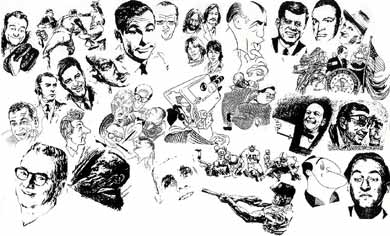
To search for a broadcast, please e nter a
Show Title, Personality, Airdate, Archive ID, Keyword or Phrase into the Search textboxes at the top of the page:
PRESERVING & ARCHIVING THE SOUND OF
LOST & UNOBTAINABLE ORIGINAL TV
(1946 - 1982)
"Preserving & disseminating important TV Audio
Air Checks, the video considered otherwise lost."
-Library of Congress
Vintage Television Audio Broadcasts
22,000 Titles - 20,000 Hours
Home | About us | Order Inquiry | TV Categories | Personality Index | Title Index
Archival Television Audio, Inc.
www.atvaudio.com
209 Sea Cliff Avenue
Sea Cliff, New York 11579
Attention: Phil Gries
|
Founder & Owner Phil Gries Director of Photography www.philgries.com |
"Any Inquiries"
Phone/Fax: (516) 656-5677
Email Us: gries@atvaudio.com
© 2002-2024 Collector's Choice Archival Television Audio, Inc.
All Rights Reserved.

Unique Visitors:
Visitor Counter
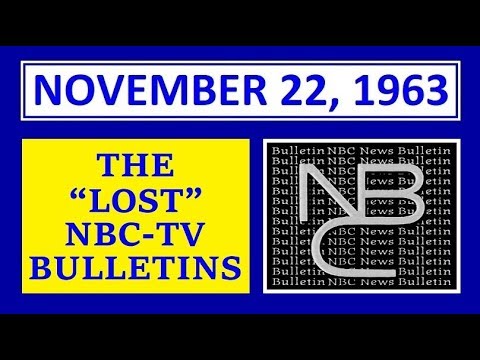
UNIQUE in the WORLD audio air check recordings by 20-year-old Phil Gries, archiving the first, second bulletins & initial NBC TV broadcast coverage of President John F. Kennedy's assassination. Not recorded by NBC or any other resource in the country.
- A&E TV SPECIAL - host Edwin Newman (11-22-1988) introduction - 25th Anniversary of JFK Assassination.
- NBC TV "Lost Don Pardo Bulletins" & Lost first 3:53 TV coverage (Phil Gries unique broadcast audio recording) unable to be video tape recorded or audio tape recorded by NBC.
- Phil Gries telephone interview with Don Pardo (5-14-1998).
- 10 minutes.
LIVE with PHIL GRIES
ARCHIVAL TELEVISION AUDIO - WEBINAR
Each Friday Evening from 7:30 - 8:30PM EST.
 RETRIEVABLE LOST MEMORIES
RETRIEVABLE LOST MEMORIESORDER
Vintage Television Audio Broadcasts
22,000 Titles
20,000 Hours
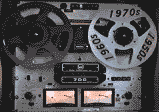
Testimonials
The Senior Moments Radio Broadcast show interviews Phil Gries about his Archival Television Audio archive and his restored documentary film, "Harlem School 1970"

Glen Cove Senior Center
January 23, 2018
 Phil Gries' recordings
Phil Gries' recordingsof vintage sounds
never grow old.

Hear Phil Gries on

Hear Phil Gries
and Joe Franklin
on Bloomberg Radio
(April 28, 2012)


Home
Contact Us
ORDER INQUIRY
Hear Phil Gries on
National Public Radio
Archive Profile

ALL THINGS CONSIDERED
"Raising Ali"
(May 22, 2015)
Hear Phil Gries
on Sports Talk:
August 25, 2019
June 26, 2016
August 9, 2015




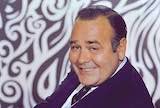
 Archive
ArchiveSearch Library
TV Categories
Personality Index
Title Index
ARSC Journal Article Publication: Lost TV Programs (1946-1972)

Hear Phil Gries presentations at ARSC (Association for Recorded Sound Collections) 2001, 2008, 2009, 2010, 2011, 2014.
Audio Samples

(Audio files may take 20 seconds or more to load)
1960's TV
Audio Player
103 Broadcast Samplers
AudioAndText™
Content
(Browser needs to
allow Flash content)
Content Collections
JFK Assassination
Coverage
NPR Walter Cronkite Essays
Civil Rights Movement (1956-1968)
Space Exploration (1956-1972)
Vietnam War
(1961-1975)
[854 Entries]
Company Information
About Us
Descriptions
Access
Fees
Archive
TIME-LINE
Accreditation
Master Materials
Research
Copyrights
Restricted Archive Titles
Catalogs
Related Materials
TV History
Lost Television
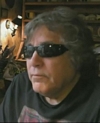
Jose Feliciano, at 70, listening to his FIRST TV variety show appearance (Al Hirt: FANFARE), telecast on July 17, 1965, when he was 19 years old.
TV Audio:
Rare & Valued
When TV Variety
Was King
This Anniversary Day
In Television History
ARSC/IASA London Conference: Why Collect?

News 12 Long Island
Live Television Profile:
Archival Television Audio, Inc
CAPTURED LIVE: CULTURES OF TELEVISION RECORDING AND STORAGE, 1945-1975

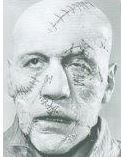
NBC MATINEE THEATER
FRANKENSTEIN
NBC TV - Feb. 5, 1957
8:23 min. excerpt
Phil Gries TV Audio Archive
Profile Segment
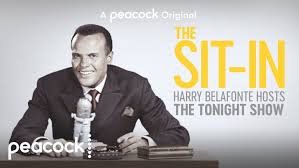
Harry Belafonte Hosts
The Tonight Show
5:21 min. excerpt
Password: Phil
(Case Sensitive)